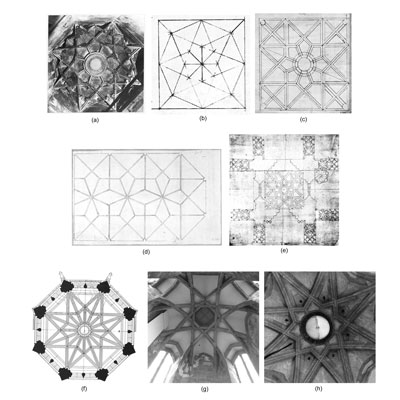Islamic Crossed-arch vaults in Gothic and Renaissance: a problem in building technology transfer
Autores: Paula Fuentes y Santiago Huerta
Crossed-arch vaults are a particular type of ribbed vaults. Their main feature is that the ribs that form the vault are intertwined, forming polygons or stars and leaving an empty space in the middle. The firsts appear in Córdoba in the second half of the 10th Century. Afterwards, the type diffused through Spain and North Africa, 11th-13 th Centuries. These vaults reappear in Armenia in the 13th Century. In the 14th and 15th Century a few examples are found both in England (Durham, Raby) and Central Europe (Prague, Landshut, Vienna). At about the same time, Leonardo da Vinci produced designs for the Tiburio (Ciborium) of Milan cathedral with a cross-arched structure and proposed tests to assess the strength; he also, made use of the same pattern of vault for Renaissance centralized churches. Eventually, the type can be tracked through the 17th (Guarini) and 18th (Vittone) Centuries, until Spanish post war architecture in the 1940-60s (Moya). Some questions arouse, which so far, has not been answered. How is it possible that a particular type of vault had such enormous geographical spread? How it was transmitted from Córdoba to the Caucasus? The matter is one of transfer of knowledge, ideas, and technology; it relates both aesthetics and construction.
Fuentes, P. and S. Huerta. 2015. Islamic Crossed-arch vaults in Gothic and Renaissance: a problem in building technology transfer. In: Proceedings of the Fifth International Congress on Construction History, v.2, pp. 111-118. Chicago: Construction History Society of America.











